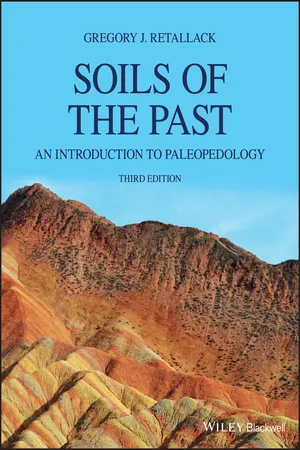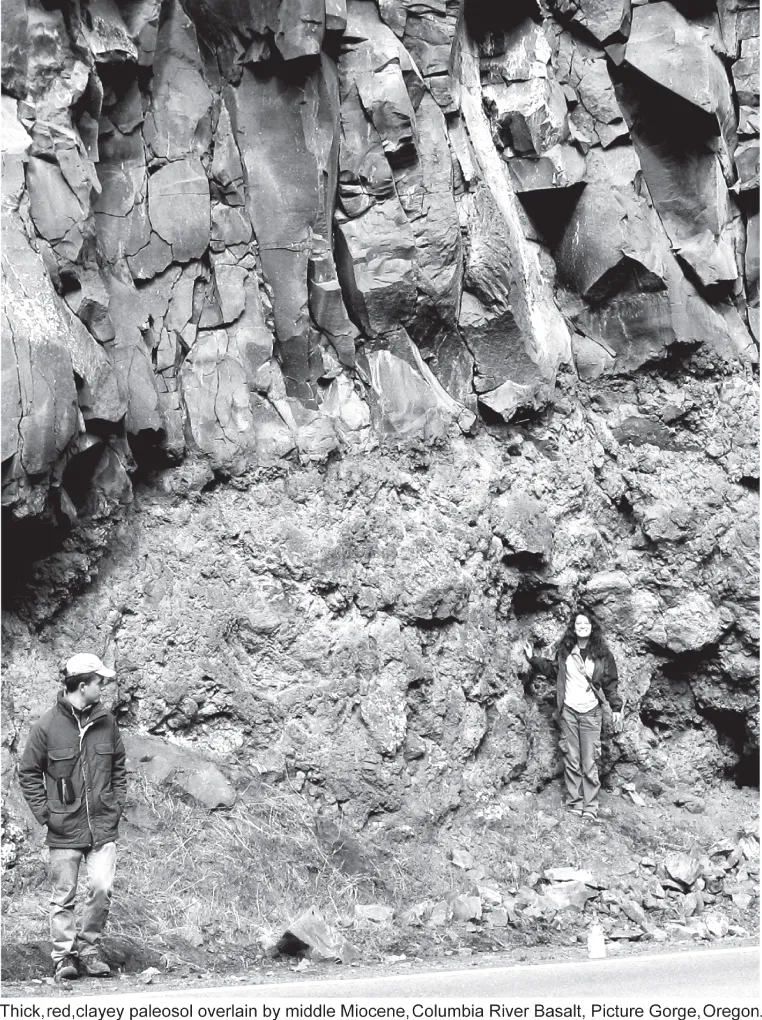
- English
- ePUB (mobile friendly)
- Available on iOS & Android
About this book
A student-friendly textbook that describes ancient soils, how they may be identified, and their use in paleoenvironmental reconstruction
Ancient soils contain vital mineralogical, geochemical, textural, and paleontological information about the continental environments in which they formed. Advances in isotope geochemistry and sequence-stratigraphic models allow evermore detailed reconstructions of environmental change from paleosols, and new insights into such diverse topics as atmospheric chemistry, global change, paleoecology, geobiology and mass extinction. This book educates readers about the field of paleopedology and how it remains a key area of investigation for geologists and environmental scientists seeking to learn about, and reconstruct, the condition and evolution of paleoenvironments.
Presented in three sections—Soils and Palesols; Factors in Soil Formation; and Fossil Record of Soils—Soils of the Past: An Introduction to Paleopedology describes the main types of ancient soil, procedures for identifying and studying them, their classification and, most significantly, a wide array of examples of how paleosols have been used for paleoenvironmental reconstruction. The book is an excellent reflection of the current state of knowledge and can be widely adopted over many disciplines.
- All chapters have been revised and updated to reflect advances in soil science in the last two decades
- New tables display a wealth of new data added since the 2nd edition published in 2001
- New figures have been added and line art has been redrawn to improve clarity and promote understanding
- References have been updated throughout
Soils of the Past, 3rd Edition is written for advanced undergraduates studying paleopedology as part of a degree in geology, environmental science, or physical geography, and for interested professional earth scientists.
Frequently asked questions
- Essential is ideal for learners and professionals who enjoy exploring a wide range of subjects. Access the Essential Library with 800,000+ trusted titles and best-sellers across business, personal growth, and the humanities. Includes unlimited reading time and Standard Read Aloud voice.
- Complete: Perfect for advanced learners and researchers needing full, unrestricted access. Unlock 1.4M+ books across hundreds of subjects, including academic and specialized titles. The Complete Plan also includes advanced features like Premium Read Aloud and Research Assistant.
Please note we cannot support devices running on iOS 13 and Android 7 or earlier. Learn more about using the app.
Information
Part I
Soils and paleosols

Chapter 1
Paleopedology



Table of contents
- Cover
- Table of Contents
- Preface to the third edition
- Preface to the second edition
- Preface to the first edition
- Acknowledgements
- Part I: Soils and paleosols
- Part II: Factors in soil formation
- Part III: Fossil record of soils
- Glossary
- References
- Index
- End User License Agreement